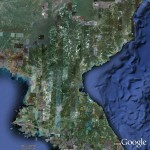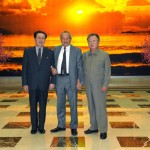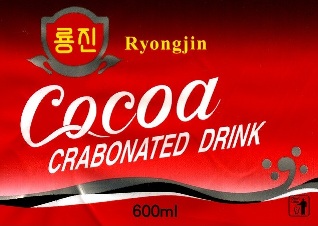You can see the whole report here (PDF).
According to Martyn Williams (PC World):
The number of 3G cellular subscriptions in North Korea passed half a million during the first quarter, the country’s only 3G cellular operator said this week.
The Koryolink network had 535,133 subscriptions at the end of March, an increase of just over 100,000 on the end of December 2010, said Orascom Telecom. Egypt’s Orascom owns a majority stake in Koryolink, which is operated as a joint venture with the state-run Korea Posts and Telecommunications Co.
Subscriber growth has been strong ever since the network was launched in late 2008, but the most recent quarter delivered the first signs that Koryolink is having to work harder for new subscribers.
The January to March period was the first time since the third quarter of 2009 that the number of new subscribers during the quarter failed to be more than the previous quarter. In the October to December quarter, the company added just over 130,000 new customers.
Revenue for the quarter was a record US$25.7 million, a jump of 185 percent on the same period of 2010. Orascom doesn’t disclose net profit figures for the company.
The company is keen to launch new value-added services to raise average revenue per user (ARPU) and during the quarter it began offering MMS (Multimedia Messaging Service). Customers gave the service a positive response, Orascom said.
But despite the efforts, ARPU fell to its lowest level since service began in 2009. At just US$12.7 per month, it was down 40 percent on the same period last year.
Orascom also launched pre-paid cards denominated in euros to boost foreign exchange earnings from North Korea. The scratch cards offer free voice and value-added service use during off-peak hours.
The company’s network now covers 92 percent of the population.
North Korea is one of the world’s most heavily controlled countries and communication is severely restricted. Most cell phones don’t have the ability to make or receive international calls.
The Daily NK offers some additional information:
Cell phone customer numbers are rising while the price of the handsets is falling, according to sources from inside North Korea.
One such source from Pyongyang reported on the 18th, “The phone bill is no different from in the past, only the price of the cell phone itself is falling.”
According to sources, in Pyongyang a single-piece handset has gone from $280 to $250, and a clamshell design from $400 to $380 (at the exchange rate in South Pyongan Province, one dollar is presently worth 2,500 North Korean won, while a kilo of rice continues to drift in the 2,000 won range).
The source explained, “Cell phone users keep increasing. In Pyongyang, approximately 60% of people between their 20s and 50s use cell phones. Especially for the younger generation in their 20s and 30s, a cell phone is seen as a necessary item,” he said.
A source from Shinuiju also commented, “Around three out of ten young people have got a cell phone, and prices have been cut a bit.”
A source from South Pyongan Province agreed, too, saying, “Cell phone bills and prices have dropped compared with in the beginning. A basic cell phone (single-piece) is $225 and an expensive one is $300. You pay 30,000 won in our money, and then you can use it for 200 minutes.”
The source went on, “But when you buy a $10 card, you can use it for 600 minutes. This is a state policy to earn dollars.”
He explained that according to the jangmadang exchange rate, $10 is currently 25,000 won, meaning that payment for credit in dollars is of huge benefit in terms of value for money.
However, there is still an application fee of $800 and registration fee of $100, as before.
The source reported, “Cell phone traders purchase cell phones using their families’ and relatives’ names,” because only one handset per person is allowed. “Since there are many people who have obtained a cell phone in another’s name, their cell phones occasionally get confiscated when they go to the telephone office to pay the bill and get their ID checked.”
In a connected story, Radio Free Asia reported on the 19th that Koryo Link has added another 100,000 subscribers to its books since the end of last year, bringing the total number to 535,133 as of the end of March.
However, in contrast with Pyonyang and the interior areas of North Korea where usage is growing, the battle in the border region is still to restrict and control cell phone usage. Distinguishing a Chinese cell phone is not easy, so cracking down on the practice of using them is not easy, either, and therefore the method of applying for a cell phone has been made more difficult, among other measures.
According to one Yangkang Province source, “One person who took cell phones brought in by smugglers in March, remodeled and sold them was arrested by the People’s Safety Ministry, and in the light of that the process for applying for a cell phone here got stricter. The person who wishes to buy the phone must have the signature of a National Security agent now. In the beginning, there was no such rule.”
In North Korea, applications for cell phones are handled by sales offices; however, the procedure is more difficult now, and so some get the handset from a smuggler and only the number from the local office, in order to avoid the process. Of course, bribes are necessary to facilitate that, currently approximately $400-$450 in Yangkang Province.
According to sources, an official North Korean cell phone works on a different frequency to those from China in order to stop their being used to connect outside the country. However, if the frequency of a smuggled phone is changed to match North Korea’s, then the cell phone can be used.
And according to Mobile Business Briefing:
Orascom Telecom’s North Korean mobile arm, koryolink, surpassed the half a million subscriber mark in the first quarter, representing growth of 420 percent year-on-year. Orascom noted during its Q1 earnings yesterday that its North Korean subscriber base has reached 535,133, up from 125,661 a year earlier. While the numbers are still relatively small, Orascom’s North Korean venture – which was first launched in December 2008 – is being closely watched; koryolink is the only commercial operator in the notoriously secretive and totalitarian country and therefore has huge growth potential – as well as being a risky investment. Orascom said that current mobile penetration in North Korea is just 2 percent. Its revenue from koryolink rose 185 percent year-on-year to US$25.8 million in Q1, while earnings (EBITDA) hit US$22.6 million, giving it an impressive EBITDA margin of 87.6 percent.
koryolink’s network currently consists of 341 base stations covering the capital Pyongyang, 14 main cities as well as 72 smaller cities, Orascom said. The network also extends over 22 highways. As of the end of Q1 2011, koryolink covers 13.6 percent of the country’s territory and 92 percent of its population. In January 2011, koryolink launched MMS services for the first time, the latest addition to its VAS portfolio. The firm has also focused on maximising foreign currency revenue, launching in February a recharge card that can be bought in Euros.






